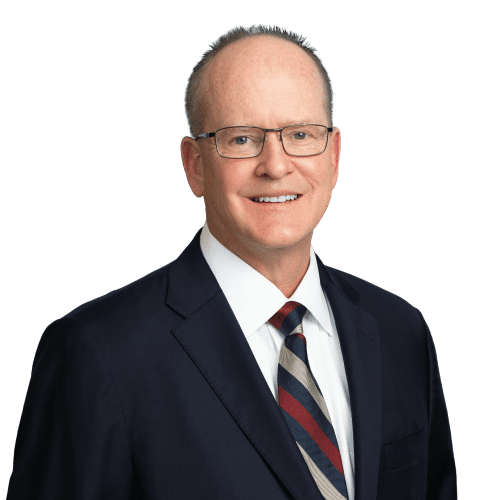Understanding the Key Employer Requirements of the Federal Families First Coronavirus Response Act

In addition to providing for free coronavirus testing, enhanced unemployment compensation insurance relief, and additional funding for government nutritional programs and Medicaid, the Families First Coronavirus Response Act - signed into law by President Donald Trump on March 18, 2020, with an April 2, 2020, effective date - contains two key components that will impact all federal and state employers and private employers with less than 500 employees ("covered employers"):
- The Emergency Paid Sick Leave Act, which requires covered employers to provide employees impacted by COVID-19 with 80 hours of paid sick leave; and
- The Emergency Family and Medical Leave Expansion Act, which amends the federal Family and Medical Leave Act (FMLA) to require covered employers to provide to any employee who has been employed for at least 30 days up to 12 weeks of job-protected leave (10 of which are to be paid) for specific, COVID-19-related needs.
Each is discussed in greater detail below. Also below is useful information regarding employer reimbursement and other potential opportunities to offset business costs associated with this new mandate.
Emergency Paid Sick Leave Act
Qualifying Reasons for Leave
Incorporating definitions taken from the Fair Labor Standards Act (FLSA), covered employers must provide paid leave to any employee who is unable to work or telework because the employee is:
- Subject to a federal, state, or local quarantine or isolation related to COVID-19;
- Directed to self-quarantine by a health care provider due to concerns related to COVID-19;
- Experiencing symptoms of COVID-19 and is seeking a medical diagnosis;
- Caring for an individual who is subject to a federal, state, or local quarantine due to COVID-19 or has been advised to self-quarantine by a health care provider due to COVID-19;
- Caring for a son or daughter whose school or daycare has been closed due to COVID-19; or
- Experiencing any other substantially similar symptom to COVID-19 as specified by the Secretary of Health.
Importantly, employees are entitled to paid leave for any of the qualifying reasons listed above regardless of their length of employment with the covered employer.
How Much Leave Must Be Provided, and at What Rate of Pay?
The amount of leave that must be provided depends on whether the worker is employed on a full-time or part-time basis and the reason for the leave. Full-time employees are entitled to receive 80 hours of sick leave while part-time workers are entitled to paid leave in an amount equivalent to the number of hours the employee works, on average, over a two-week period.
For the first three categories of leave above, workers are to be paid at least their normal wage or the federal, state, or local minimum wage, whichever is greater, not to exceed $511 per day and $5,110 in the aggregate. In the case of leave taken for the remaining three categories of leave, pay is two-thirds the employee's regular rate of pay, not to exceed $200 per day and $2,000 in the aggregate.
For How Long Is the Emergency Paid Leave Program Available?
Paid sick time under this bill does not carry over from year to year and ceases on the employee's next scheduled work shift "immediately following the termination of the need for paid sick time." In addition, the paid sick leave program is temporary and will sunset on December 31, 2020.
Employee Protections
The Emergency Paid Leave Act bars employers from: (1) requiring a worker to find a replacement to cover his or her hours during time off; and (2) discharging or discriminating against workers for requesting paid sick leave or filing a complaint against the employer, in other words, retaliating against or interfering with an employee's exercise of rights under the law.
Notice Requirements
Employers will be required to post a notice of rights under the law once it is published by the U.S. Department of Labor (DOL). The DOL has seven days from the law's enactment, or until March 25, 2020, to publish a model notice.
Exemptions
The Act authorizes the Secretary of Labor to publish regulations exempting health care providers and emergency responders, as well as businesses with fewer than 50 employees if their viability as a business would be threatened, from the paid sick leave requirements.
Emergency Family and Medical Leave Expansion Act
The Emergency Family and Medical Leave Expansion Act amends the FMLA to provide for "public health emergency leave" that is available to any full-time or part-time employee who has been employed for at least 30 calendar days by a covered employer, defined as any private employer with less than 500 employees.
- The law establishes a new "qualifying need related to a public health emergency," which is limited to the need for leave to care for the employee's son or daughter under 18 years of age if the school child care facility is closed, or the child care provider is unavailable.
Amount of Leave
Eligible employees are entitled to 12 weeks of job-protected leave under this amended provision, all but the first 10 days of which are paid. Although employers are permitted to provide unpaid leave for the first 10 days under this amendment, the Emergency Paid Sick Leave Act will still require employers to pay the first 10 days under that Act unless the employer is otherwise exempt. The remaining leave taken is paid at two-thirds the employee's regular rate of pay.
Exemptions
The Emergency FMLA expansion also authorizes the Secretary of Labor to publish regulations exempting from coverage health care providers and emergency responders, as well as businesses with fewer than 50 employees if their viability as a business would be threatened. As of the publication date of this alert, no regulations have been promulgated under either Act.
How Sick Leave Is Reimbursed by the Federal Government
The new law provides payroll tax credits to employers to cover wages paid to employees while they are taking time off under either of the two programs described above, as well as sick leave for self-employed individuals.
The "sick leave credit" provides wages for each employee as much as $511 per day while the employee is receiving paid sick leave to care for himself or herself, or $200 if the sick leave is to care for a family member or child if their school is closed. The credit is limited to the excess of 10 days over the aggregate number of days taken into account for all preceding calendar quarters.
The "family leave credit" provides wages for each employee as much as $200 per day while the employee is receiving paid leave, or an aggregate of $10,000.
The "self-employed leave credit" provides a similar refundable credit, which would cover 100% of self-employed individuals' sick leave equivalent or 67% if they were taking care of a sick family member or child if their school is closed. Their sick-leave-equivalent amount is the lesser of their average daily self-employment income, or $511 per day if caring for themselves or $200 if caring for a family member. It would be available for 10 days over the number of days taken into account in preceding years. Self-employed individuals can receive a family leave credit for as many as 50 days for the lesser of $200 or their average daily self-employment income.
These credits would be in effect for wages through the end of 2020.
Treasury Advances for Paid Sick Leave Requirements
U.S. Treasury Secretary Steven Mnuchin announced that the Treasury Department will use its regulatory authority to make advances to small businesses obligated under the new law to pay sick leave to their employees who do not have the cash on hand to cover the costs of such leave and cannot wait for the tax credit.
Small Business Administration Loan Programs
The SBA will work directly with the state governor to provide targeted, low-interest loans to small businesses and nonprofits that have been severely impacted by COVID-19. Its Economic Injury Disaster Loan Program provides small businesses with working capital loans of up to $2 million that can provide vital economic support to small businesses to help overcome the temporary loss of revenue they are experiencing.
Once Florida has been designated as a disaster zone, individuals would apply directly to the SBA. Find more information on the SBA's economic injury disaster loans at https://www.sba.gov/funding-programs/disaster-assistance.
Florida Bridge Loan Program
On March 16, 2020, Gov. Ron DeSantis activated the Florida Small Business Emergency Bridge Loan Program, which provides short-term, interest-free loans (for one year) to Florida small businesses to help them weather this storm until other longer-term resources, such as tax credits from the Treasury and the Small Business Administration, arrive. Under the program, businesses can receive up to $50,000 in loans, with up to $100,000 made in exceptional cases. To complete a bridge loan application by the May 8, 2020, deadline, and for more information about the program, visit www.floridadisasterloan.org.
IRS Tax Delay
The IRS has announced that taxpayers can delay paying their income taxes on as much as $1 million in taxes owed for up to 90 days. This extends the deadline for taxpayers to pay their taxes from April 15 to July 15, 2020. Corporations will also be allowed to delay paying up to $10 million in taxes for 90 days through July 15, 2020.


